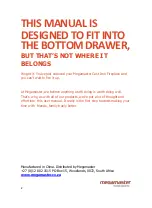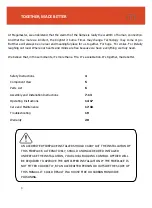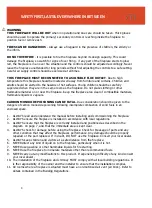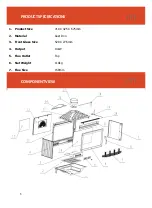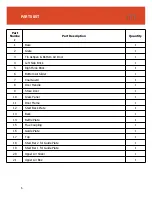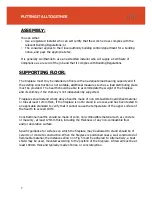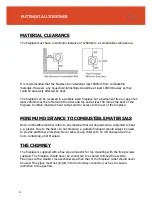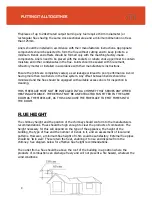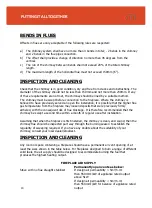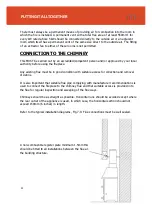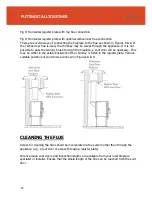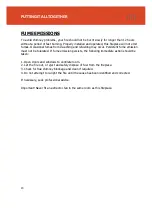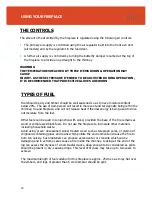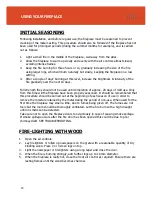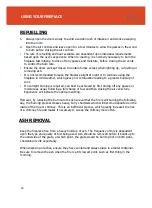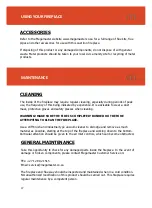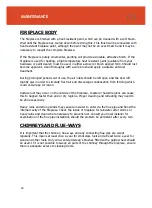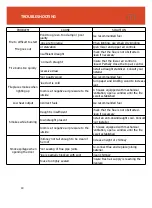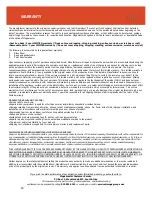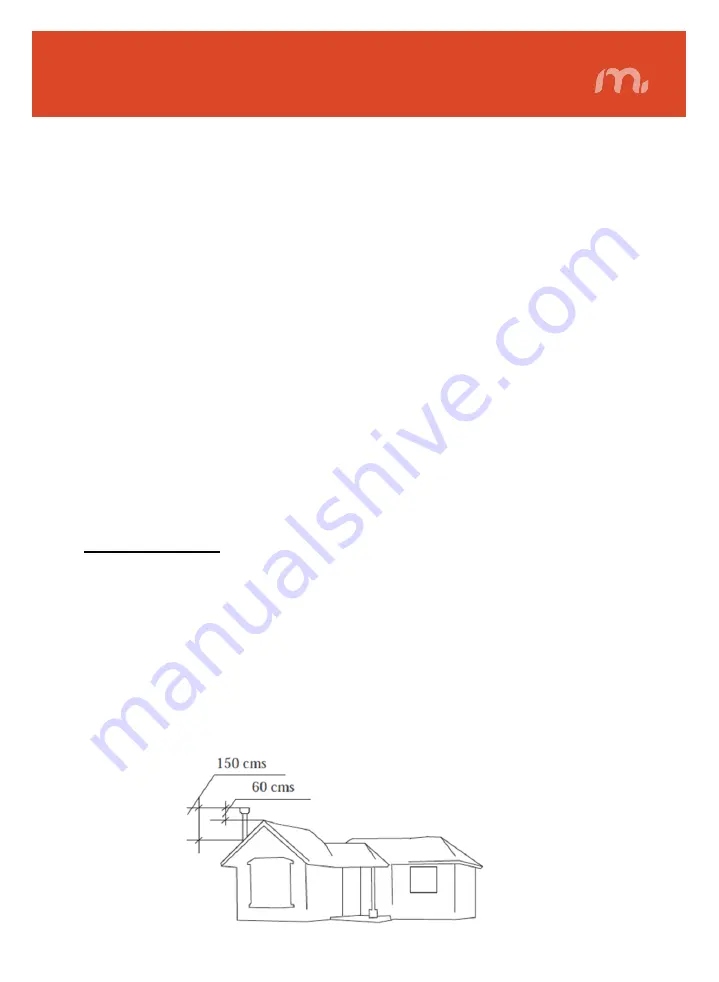
PUTTING IT ALL TOGETHER
Fireplaces of up to 20kW rated output burning any fuel require 150 mm diameter (or
rectangular flues having the same cross-sectional area and a minimum dimension not less
than 125mm.
Liners should be installed in accordance with their manufacturers instructions. Appropriate
components should be selected to form the flue without cutting and to keep joints to a
minimum. Bends and offsets should be formed only with the matching factory-made
components. Liners need to be placed with the sockets or rebate ends uppermost to contain
moisture and other condensates in the flue. Joints should be sealed with fire cement,
refractory mortar or installed in accordance with their manufacturers instructions.
Ensure the joints are completely sealed, as air leakage will lead to poor performance. Avoid
having more than two bends in the flue system. Any offset between bends should be
minimized and the flue should be equipped with suitable access doors for inspection &
cleaning.
THIS FIREPLACE MUST NOT BE INSTALLED INTO A CHIMNEY THAT SERVES ANY OTHER
HEATING APPLIANCE. THERE MUST NOT BE AN EXTRACTOR FAN FITTED IN THE SAME
ROOM AS THE FIREPLACE, AS THIS CAN CAUSE THE FIREPLACE TO EMIT FUMES INTO
THE ROOM.
FLUE HEIGHT
The chimney height and the position of the chimney should conform to the manufacturers
recommendations. Flues should be high enough to clear the products of combustion. The
height necessary for this will depend on the type of the appliance, the height of the
building, the type of flue and the number of bends in it, and an assessment of local wind
patterns. However, a minimum flue height of 4.5m could be satisfactory. External flue pipes
should be ‘twin wall’. These retain the heat, enabling it to rise and disperse from the
chimney. See diagram below for effective flue height recommendations.
The outlet from a flue should be above the roof of the building in a position where the
products of combustion can discharge freely and will not present a fire hazard, whatever the
wind conditions.
9


